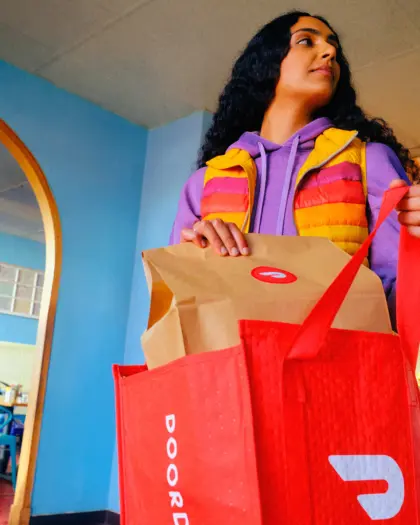When I first encountered Liquid Death, I was admittedly sceptical: a canned water brand with skulls, punk imagery, and a logo that looks more suited to an edgy craft beer than a supposedly healthier beverage alternative. Yet, over time, I've come to view Liquid Death as a prime example of how a company can radically shift perceptions, break into a crowded market, and build a valuation of over one billion dollars. I believe the strategies they've deployed, prioritising brand personality, leveraging viral content, and expanding product lines in a thoughtful way, are relevant lessons for any founder looking to grow a direct to consumer (DTC) grocery brand.
Reimagining a Commodity Through Branding
Water is arguably the plainest product one can market; it's colourless, tasteless, and odourless. Traditionally, premium water brands emphasise their purity or exotic sources, focusing marketing messages on Alpine mountain springs and carefully curated pH levels. Liquid Death flipped the script by adopting rebellious branding. By stripping away the conventional "natural purity" storyline, they created a visual identity and brand voice that stands out on the shelf.
Rather than emphasising science or serenity, Liquid Death used skull graphics, provocative copywriting, and rock concert aesthetics. From my vantage point, the genius lies in this bold contrast. They took a product category that had grown stale with near-identical messaging and gave it a cultural edge. It generated immediate intrigue, something that can be replicated by other DTC brands looking to differentiate themselves in a crowded space.
The global bottled water market, valued at USD 351.9 billion in 2024, is projected to reach USD 674.8 billion by 2033, exhibiting a CAGR of 7.5%. This growth underscores the potential for innovative brands like Liquid Death to capture market share through distinctive branding strategies.
If you're operating in a saturated product category, evaluate how your brand can be positioned to challenge entrenched expectations. It doesn't have to be "punk rock," but it must be distinctly yours. Find what everyone else overlooks, maybe the mainstream's unspoken clichés, and invert them.
Prioritising Virality Over Traditional Ad Spend
Liquid Death, in its early days, relied heavily on generating viral buzz rather than investing in massive ad campaigns. From my perspective, this is a powerful approach for startups with limited marketing budgets and a brand identity that lends itself to shareable content. For Liquid Death, that meant edgy short videos, comedic stunts, and collaborations that invited debate on social media.
Whilst many new brands burn through cash on Instagram and Facebook ads without seeing sustainable returns, Liquid Death harnessed organic engagement. They positioned their cans in bars, music festivals, and places where people naturally pull out their phones and tag what they're drinking. That immediate social proof, combined with the brand's "shock factor," dramatically reduced the cost of acquiring new fans.
This strategy aligns with the growing trend of consumer engagement through social media. In 2024, beverage brands are increasingly leveraging platforms like Instagram and TikTok to showcase innovative drink recipes and build engaged communities. This approach is particularly effective in reaching younger demographics, with Gen Z and Millennials showing a strong preference for brands that offer authentic and engaging content.
Map out where your target audience genuinely converges, whether that's a niche music festival or a specialised online community, and concentrate your initial marketing there. Lean into partnerships that yield shareable moments. When authenticity shines through and the experience stands out, word-of-mouth can grow exponentially.
Strategic Distribution and Geo-Targeting
One of the biggest game-changers for Liquid Death was moving into physical retail quickly after capturing online buzz. They secured distribution in 113,000 retail locations across the US and UK, and in doing so, they saw retail scan sales of 263 million dollars in 2023, up nearly 140% from the year before. The approach was straightforward: they used the brand's cult-like following to convince retailers that people weren't just intrigued online; they were ready to buy in-store.
Upon reviewing the data, Liquid Death also employed advanced geo-targeted advertising. They would run social media ads specifically aimed at users living within a certain radius of newly stocked shops, giving them a call to action to "pick up a can in person." This technique helped close the gap between digital interest and real-world purchases, and it's a method that can easily be replicated by other DTC businesses.
The success of this strategy is reflected in the broader DTC food market trends. The global DTC food market is projected to reach $195.39 billion by 2031, growing at a CAGR of 18.7% from 2024 to 2031. This rapid growth underscores the potential for brands that can effectively bridge the gap between online engagement and physical retail presence.
Once you land that coveted retail placement, whether in supermarkets, convenience shops, or specialised stores, run ads with a local focus. Offer a compelling reason for a customer to go in and buy now, rather than simply broadcasting brand awareness. Measure those campaigns meticulously to ensure they translate into higher footfall and repeat sales.
Broadening the Portfolio
After establishing a strong base with plain canned water, Liquid Death introduced sparkling versions, flavoured Sparkling Waters, and then iced teas. Soon, they moved into sachets of flavoured electrolyte powder. Today, the majority of their sales come from these additional SKUs, not from the original still water.
From my perspective, this multi-pronged product strategy serves two vital functions. First, it addresses different segments of the broader beverage market, appealing to customers who might not be satisfied by plain water alone. Second, and perhaps more importantly, it keeps the brand fresh. By introducing unusual flavours, like hot fudge sundae in collaboration with Van Leeuwen, they maintain a sense of unpredictability. The novelty drives immediate spikes in sales, especially if marketed as a limited edition or available exclusively online.
This approach aligns with the growing consumer demand for functional and innovative beverages. In 2024, there's a notable shift towards drinks that offer more than just hydration, with consumers seeking added health benefits and unique flavor experiences. The rise of functional beverages, including those infused with probiotics, adaptogens, and other wellness-oriented ingredients, presents a significant opportunity for brands to diversify their product lines.
Once your brand and core product have traction, consider expansions that preserve the essence of your brand identity. Don't feel pressured to move too quickly or stray from your core ethos. Each new line should reinforce your brand message rather than dilute it. Limited-edition or collaborative launches can create urgency and brand heat.
Embracing Merch and Cult Appeal
Most beverage brands treat merch as an afterthought, if they bother with it at all. Liquid Death, on the other hand, recognised early that fans wearing your brand's T-shirts and accessories in public is a powerful form of free advertising. They sold millions of dollars' worth of apparel and novelty items, everything from gold watches to a nearly six-thousand-pound cold plunge.
In my view, this demonstrates a willingness to think beyond the physical product of water. Instead, they sell a lifestyle and identity. Importantly, merch and "stunts" like soul-selling country club memberships generate headlines and social posts. They also create deeper loyalty among fans, who now have a tangible affiliation with the brand, not just its flavour.
This strategy taps into the growing trend of brand communities and experiential marketing. In 2024, consumers are increasingly seeking brands that offer more than just products – they want experiences and a sense of belonging. By creating a cult-like following through merchandise and unique experiences, Liquid Death has effectively positioned itself as a lifestyle brand, transcending the traditional boundaries of the beverage industry.
If your customers genuinely identify with your brand values, merchandise can be a multiplier for both revenue and visibility. It can also serve as an engagement channel, with limited drops and exclusive products driving urgency. That said, ensure it aligns with your brand's look and feel, merch should never be a throwaway afterthought.
Potential Pitfalls and the Road Ahead
Liquid Death's greatest strength is its edgy branding and viral campaigns, but as I see it, this also poses its biggest risk. The more they scale and become mainstream, the harder it may be to sustain a countercultural appeal. My concern is whether they can maintain that "outsider" status when they're in tens of thousands of shops worldwide and have the budgets of a major beverage corporation.
There's also the question of authenticity. If consumers begin to see the brand as purely profit-driven, rather than truly rebellious, will that diminish the cool factor? For founders, the lesson is clear: consistency is key. If your brand hinges on an alternative identity, you have to be prepared for increased scrutiny. You can't afford to appear inauthentic.
This challenge is particularly relevant in the context of the evolving beverage market. With the global DTC food market, including beverages, expected to reach $195.39 billion by 2031, maintaining brand authenticity while scaling operations will be crucial for long-term success.
As your company grows, lean into the values that made it special from the outset. If you're "punk" or "disruptive," show that in every move, right down to philanthropic initiatives, staff policies, and how you communicate publicly. Rapid growth is exciting, but brand coherence must remain top of mind.
Replicating Liquid Death's Success
In my opinion, Liquid Death succeeded by attacking a ubiquitous category, bottled water, from a dramatically different angle. They leveraged a distinct brand identity to make a viral splash, capitalised on physical distribution, and expanded into new products without losing their edge.
Founders looking to replicate aspects of this strategy should consider these guiding principles:
- Positioning: Take what everyone else does and invert it.
- Virality: Cultivate authentic, shareable moments rather than relying solely on paid ads.
- Distribution: Once you're online, quickly move into strategic physical locations and use hyper-targeted campaigns to drive sales.
- Expansion: Launch new products that reinforce your brand promise, keeping customers engaged and curious.
- Merch & Lifestyle: Use merchandise to amplify brand presence, but ensure it's cohesive and meaningful.
- Authenticity at Scale: Plan for how you'll retain the brand's core DNA as you achieve mainstream adoption.
From my perspective, these tactics aren't just relevant for canned water but for any direct to consumer grocery product aiming to become more than just another item on the shelf. If you can create a brand that truly resonates, rallying an enthusiastic community behind you, then you can carve out a profitable, sustainable, and differentiated space in even the most crowded market.
As the beverage industry continues to evolve, with trends like health-conscious choices, sustainability, and innovative flavors driving consumer preferences, brands that can adapt these strategies to their unique offerings will be well positioned for success in the dynamic and competitive market of 2024 and beyond.














